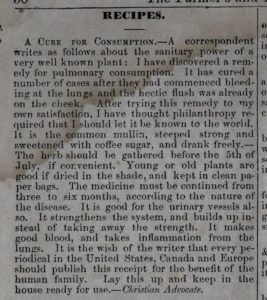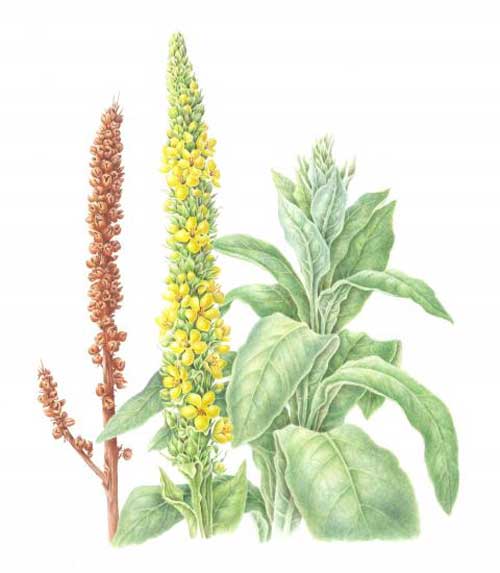
Blum, L.V., and E.T. Blum. Blum’s Farmer’s and Planter’s Almanac , Pg. 212. Salem, N.C.: L.V. & E.T. Blum, 1875.
Blum’s Farmer’s and Planter’s Almanac originated in Salem, North Carolina in 1828 by a man named John Christian Blum. Like many at this time in North Carolina, Blum had little advantages, but sought to develop his own Almanac by buying a second hand printing press to develop the books. With the help of his two sons, Blum created his printing company and published annual Almanac’s which contained astronomical data and tide tables, advice for farmers, important dates, delicious recipes, and other useful information (3).
The recipe section in Almanac’s did not always consist of the traditional sorts. With lack of medical knowledge and technology, many relied on books like Blum’s Almanac to provide “cures” for colds, headaches, fevers, and a variety of other illnesses. Harvested crops were not only viewed as a food source, but had medicine properties that North Carolinian’s relied on. The recipes often used resources that were geographically available to those in the book’s region to put to use as cures and aids (3).
In the 1875 addition of Blum’s Almanac, “A Cure For Consumption” was featured inside the recipe section of the book. Consumption, now called Tuberculosis, “consumed” the lives of over one billion people in the eighteenth and nineteenth centuries. The disease affected the respiratory system and caused a painful death with no known treatment or prevention at the time of the books publishing. It was not until later in the nineteenth century when scientific advancements were made, leading to modern vaccinations which prevent the spread of the disease (4).
The “cure” inside Blum’s Almanac instructed using the common “mullia,” an herb formerly known as mullein. The use of mullein as a cough suppressant, anti inflammatory, and treatment to asthma dates back to European colonization (2). The process involved steeping the herb and mixing it with sugar to be drank by someone who had fallen ill. We can assume by the proximity of Salem to Orange County, and the similarities in agricultural practices, that this recipe would have benefited and been used by people in Chapel Hill at the time of nineteenth century expansion.
Footnotes
1. Blum, L.V., and E.T. Blum. Blum’s Farmer’s and Planter’s Almanac , Pg. 212. Salem, N.C.: L.V. & E.T. Blum, 1875. Accessed October 5, 2018. UNC Library.
2. The Herb Companion Staff. “Herb to Know: Mullein (Verbascum Thapsus).” Mother Earth Living. August/September 2009. Accessed October 07, 2018. https://www.motherearthliving.com/plant-profile/herb-to-know-mullein-verbascum-thapsus.
3. The History of Blum’s Almanac. Accessed October 07, 2018. http://www.blumsalmanac.com/contentstatic.asp?StaticID=1.
4. “History of Tuberculosis.” Wikipedia. September 18, 2018. Accessed October 07, 2018. https://en.wikipedia.org/wiki/History_of_tuberculosis#Nineteenth_century.
